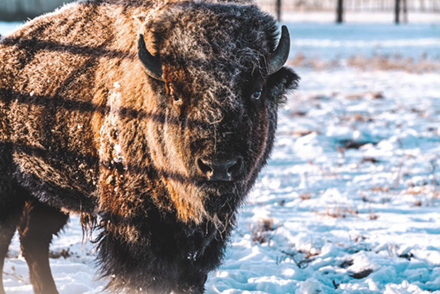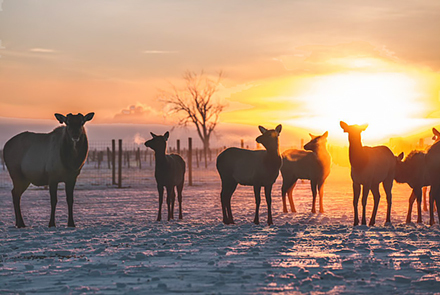



Fighting a roaming disease in feral swine
Brucellosis is a complicated and profoundly destructive disease
The bacterium has a myriad of species that can infect different animal populations, both domestic and wild, with many of the Brucella species capable of spreading to humans. It can also be hard to identify clinically as, in the absence of abortions or stillbirths, the disease causes no distinct clinical signs.
Controlling this disease has been addressed through a national eradication program for almost 80 years. This includes development of vaccines to protect livestock. However, protection is difficult due to different host-bacterial species combinations, and potential transmission from different wildlife reservoirs, including elk, bison, and feral swine. These wild species can transmit brucellosis to domestic livestock, including those that are already immunized, causing animals to test positive on serologic (antibody) tests, which initiates regulatory actions.
“When a livestock herd is infected, it is very expensive to eliminate the disease and frequently the herd is depopulated, which can be devastating to the owners,” said Steven Olsen, research leader and supervisory veterinary medical officer at ARS’s Infectious Bacterial Diseases Research Laboratory at the National Animal Disease Center in Ames, IA. “The cattle producers cannot identify the disease just by observing their herd. Vaccination is highly effective at preventing abortion events but less effective at preventing seroconversion after exposure. In the absence of abortion, there are no clinical signs as the pathogen is very well adapted to the host.”
Seroconversion is the development of specific antibodies in the blood resulting from infection and is used in the national eradication program to detect infection. Olsen and his team are working on developing new vaccines that can safely and easily be administered to domestic livestock and wildlife populations to help prevent the spread of brucellosis. They are also researching improved diagnostics to identify infected animals, reduce or eliminate the disease in wildlife reservoirs, and prevent transmission of disease to cattle herds.

“We hope to develop highly effective vaccines that not only prevent abortions, but also reduce or shorten infections after exposure,” he said. “Any vaccine for wildlife will need to be in a delivery platform that can be effectively given and will also need to be evaluated for environmental safety.”
When infected wildlife transmit the disease to domestic livestock, the risk of female members of the herd experiencing abortions increases, which can lead to additional exposures. The disease can also cause sterility in bulls. In most cases, handlers have to depopulate the entire herd, causing major economic hardship.
There is also a risk of transmitting brucellosis to humans. Many infected livestock, including sheep and goats, can shed the bacteria in their milk, which can cause clinical disease in humans if they consume unpasteurized milk or associated products. When humans are infected, brucellosis can be a chronic, debilitating disease that does not have distinct symptoms, leading to difficulties in diagnosis.
“It’s a veterinary issue, but it’s also a public health issue,” Olsen said. “Our research data has suggested that we need to tailor vaccines to specific species due to dramatic differences in immunologic responses between species.”
He and his team are collaborating with regulatory officials in areas around Yellowstone National Park, where wildlife – mainly elk but potentially bison as well – may come into contact with domestic livestock herds. They developed an effective two-dose vaccine strategy for immunizing bison, but administering two separate inoculations to free ranging wild bison is a challenge. The wild elk population in this area is much larger than bison, and because of their unique immunologic responses, requires a completely different vaccination strategy.
“With elk, immunologically, they are in a league of their own,” he said. “They do not develop protective immune responses to vaccination and we have not found any vaccine strategy that is effective in reducing brucellosis in this species.”
In addition to formulating new vaccines and effective delivery methods, Olsen is working on developing new diagnostics to enhance the ability to identify infected animals and remove them to prevent disease transmission. Addressing the disease in wildlife reservoirs will prevent spillover from wildlife to domestic livestock.
“We continue to collaborate with stakeholders, including livestock owners and regulatory officials, to identify new research objectives or areas that need addressing,” he said. “Our overall goal is to complete the brucellosis eradication program for cattle and swine and eliminate the disease from free-ranging wildlife.”






